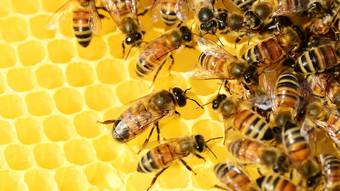The United States approved the world’s first bee vaccine to prevent the development of diseases that wipe out entire colonies. Food pollination is directly affected because of contamination that reach this bug.
The US Department of Agriculture (USDA) was responsible for granting the conditional license for the vaccine, made by the American company of biotechnology, Dalan Animal Health. The objective of the vaccine is to prevent the contamination of bees by the disease with the strange name of “American foulbrood”.
This disease, caused by the bacteria Paenibacillus larvae weakens and can even kill the entire hive. Researchers have not yet found a cure for the disease, which raises the importance of the vaccine. According to The Guardian newspaper, a quarter of hives were at least partially contaminated in the United States.
According to Keith Delaplane, an entomologist at the University of Georgia who is part of the vaccine’s development, it’s easy to identify the contagion: “It’s something that beekeepers can easily recognize, because it reduces the larvae to a brown goo that smells rancid.” .
When this happens, beekeepers must destroy and burn the infected hives, as well as administer antibiotics to prevent the disease from spreading further.
For this reason, the vaccine will initially only be available to commercial beekeepers. The instructions from the developer company are that the vaccine is applied to royal jelly, which will be ingested by the queen bee, which will then have part of the vaccine in the ovaries.
The larvae from the immunized queen bee were also born immune to the disease, which, according to Dalan, will reduce mortality from Foulbrood.
“In a perfect scenario, queens could be fed a cocktail inside a queen candy — the soft, pasty sugar that queen bees eat during transit. Queen breeders could advertise ‘fully vaccinated queens,'” says Annette Kleiser , executive director of the company.
Immunization is a big step for the United States, which has a great dependence on bee colonies for food pollination. the high decline of this insect is worrying for this sector, but also for ecosystems in general.
ALSO READ: From the hive to pollination: learn about 7 fun facts about bees

